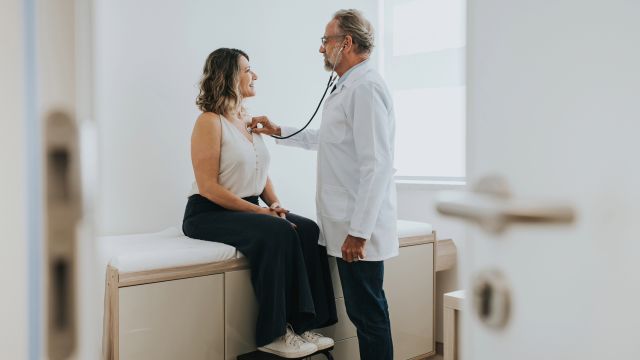Updated on June 14, 2024
Menopause is a natural part of the aging process, the transition that marks the end of the reproductive years for the female reproductive system. Specifically, menopause refers to the day that occurs 12 months after the final menstrual period. This typically occurs between the ages of 45 and 55, though the timing will vary from person to person.
The process of menopause involves three stages—perimenopause, menopause, and post-menopause. Below is an overview of what is happening during these stages, how it can impact a person’s health, and why working with a healthcare provider is critical during this part of a person’s life.
Perimenopause
Perimenopause is the stage leading up to menopause. The term perimenopause roughly translates to “near or around menopause.” This stage involves a gradual decline in the production of the hormone estrogen.
Estrogen is a hormone that is essential to the functioning of the female reproductive system, including the regulation of the menstrual cycle. The decline of estrogen during perimenopause is often an uneven process—estrogen levels can fluctuate, becoming higher at times and lower at other times. Irregular menstrual periods are often the first sign of perimenopause. This can mean cycles that are shorter, cycles that are longer, missed periods, and/or abnormal menstrual bleeding.
Fluctuating hormone levels can also cause other symptoms, including vasomotor symptoms (hot flashes and night sweats), sleep disturbances, mood changes, and decreases in libido and sexual function. There are treatments that can help with many of these symptoms, including hormone replacement therapy as well as non-hormonal therapies.
Perimenopause typically lasts between two and eight years. But the duration can vary from person to person, and in some cases, it can last for over a decade.
Menopause
Menopause occurs when estrogen levels become low enough that menstruation no longer occurs. When a person has experienced 12 consecutive months without a menstrual period, a person has achieved menopause.
Postmenopause
Postmenopause begins once a person has reached menopause. This stage continues for the rest of a person’s life. Hormone changes continue during this time, and many of the symptoms described above continue into this stage. Hot flashes and night sweats typically improve over time (though in some cases, these symptoms can last for 10 or more years). Other symptoms—such as symptoms that affect the genitals and the urinary system—typically persist or progress with time.
Work with a healthcare provider
Routine healthcare is essential to staying healthy during menopause. Hot flashes, night sweats, sleep disturbances, changes in mood, and other symptoms are stressful to live with, and can disrupt many aspects of a person’s life.
Beyond perimenopausal and postmenopausal symptoms, changing hormone levels and the effects of aging can contribute to other health conditions and concerns. Menopause is associated with an increased risk of cardiovascular disease and osteoporosis (a loss of bone density and strength). Urinary incontinence, weight gain, the risk of stroke, dry mouth, cavities, and cognitive changes are all more common after menopause. Additionally, the risk of cancer, type 2 diabetes, depression, chronic pain, and conditions that affect vision all increase with age.
Working with a healthcare provider is one of the most important steps a person can take to stay healthy after menopause and as they get older. Everyone’s health is different. Exams and checkups can determine what healthcare you need, the best way to address any health concerns, and lifestyle changes that can help support good health.






